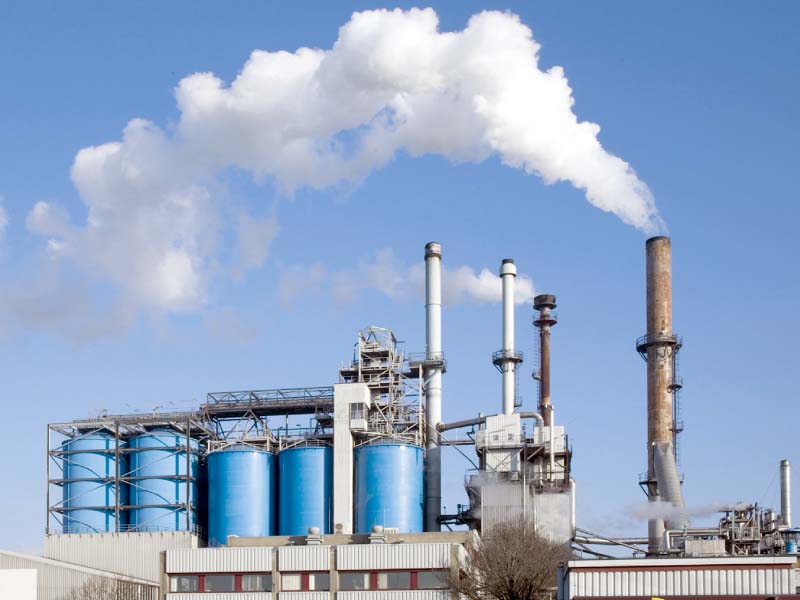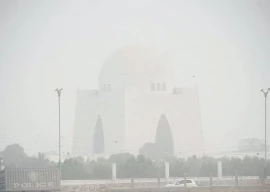
FAISALABAD: The city, which was once referred to as the little Manchester of Pakistan because of its rapid growth of textile mills and other industries, is now facing highly alarmingly air and groundwater pollution which is causing environmental hazards.
The environmental pollution has also lead to the outbreak of many deadly diseases including weakening of lungs function, birth defects, immune system defects, cardiovascular problems, neurobehavioural disorders, cancer, premature death, typhoid, hepatitis and respiratory infections. Health experts also link liver damage, kidney issue, neurological problems, thyroid system disorders, malaria, earaches, pink eyes, brain and nerve damage to the growing air and groundwater pollution in the city.
The environmental situation is aggravating in the city due to ever-increasing number of vehicles, new industrial units especially textile processing mills, poultry feeds manufacturing units, chemicals mill, dying and bleaching units, papers manufacturing units, foundries, steel units, power looms, ginning and sugar mills.
The alarming situation of the environmental pollution in the city can be judged from the statistics provided by Numbeo, the world’s largest database of user contributed data about cities and countries worldwide.
Realising the deadly impact on public health, the Punjab government established an environmental analytical laboratory to assess the gravity of air and water pollution in Ameen Town in 2010 under the Punjab Environmental Department.

The very objective of this lab was to take remedial masseurs keeping in view the effect of air and water pollution. However, only in just two years the operations of this lab halted for want of funds for almost over year. Thereafter, in 2014, it again became inoperative due to scarcity of funds and since then dysfunctional. As many as 15 employees of the laboratory including a deputy director, one research officer, two research assistants and two lab attendants are receiving salaries without any worth-mentioning research or assignments.
Astonishingly, instead of providing requests funds and utilisation of the costly machinery as per its mandates the high-up of the Punjab Environmental Department (PEA) has shifted the staff of the laboratory to different offices of the Punjab Environmental Department. During the process the lab machinery was badly damaged.
An employee of the lab, on the condition of anonymity, told The Express Tribune that the laboratories were set up in six district of the province with a cost of Rs20 million. However, the so-called ‘strong mafia’ of Lahore head office monopolised the situation in their favour.
He also pointed out that keeping in view the pollution situation in Faisalabad, the lab was set up but no efforts were made to make it operational.
“Lahore top officers of the PEA have always created impediments in the operation of lab and ultimately succeeded in rendering inoperative for indefinite period.”
“Now all the samples for appropriate analyses of the gravity of pollution of air and water of the factories and other units are being sent to head office. And that too at the discretion of the head office thus providing freehand to the pollution created units owners to play havoc to the public health with impunity,” he remarked.
The city has emerged as the one of leading victim of hepatics diseases due to poor water quality as every fourth citizen is suffering from this disease which also made it the city with highest death rate in the country.

SOURCE: NUMBEO
When contacted Punjab Environment Authority, Faisalabad Director Malik Shouakt Hayat told The Express Tribune that Lahore directorate has sought a demand summary for the provisions of funds for resourcing expenses for the operation of the labs and chimerical expenses.
“We have submitted the list of all the required equipment to the head office and hopefully will receive appropriate funds to pave the way for functioning of the laboratory by the end of this month and the staff for the laboratory would be recruited soon,” he said.
On the other hand owing to constant indifferent attitude of the agencies concerned including the Faisalabad Municipal Corporation, Faisalabad Development Authority, Labour, Industrial Department, Environment Authority and the district administration the hazards and dangerous effects on the public health pose constant threat. Almost all the public and private hospitals are crowded with the patients suffering from air and water pollution.
University of Agriculture, Faisalabad’s Social Sciences Dean Dr Muhammad Zafar Iqbal, who has conducted various studies about the impact and effects of the pollution and environment hazards over the health of citizens, told Express Tribune that the problem of water pollution in Faisalabad was growing at an alarming rate.
“The surge in population in the city has brought unprecedented pressure on safe drinking water. In most parts of the city, water is not safe for drinking. It is brackish and contaminated with various diseases. Waterborne diseases in the city are over 25% to 35% of all hospital cases and 60% infant deaths.”
“The worst conditions are prevailing in the rural area of the district where majority of population lives. The people in rural areas lack the availability of potable water. Consequently, polluted water is playing more havoc on the people living in villages who fell prey to a number diseases like tuberculosis, cancer, heart, Respiratory, high blood pressure, typhoid, stomach problems, kidney problem, food poisoning and skin problem and hepatitis,” he added.
“Faisalabad has a huge number of textile and dying, processing, chemicals, printing, poultry, foundries and sugar units which produce intensely alkaline liquor high in dissolved materials and suspended soil.”
“In the absence of adequate treatment plants, effective drainage system, bulk of the effluent from these industrial units flow into open land and low lying areas with consequential severe damage to flora and fauna. The offensive odor of stagnant pools of wastewater is a great source of nuisance to the citizens,” he observed.
Likewise, according to the survey conducted by the Sustainable Development Policy Institute (SDPI) about plight of Faisalabad environment, the environmental standards are only enforced by those who are involved in exports (as a mandatory requirement) while the rest of the industry does not have any binding.
“Industry seems least willing to protect the environment and these calls for removing lacunas in the existing urban and environmental laws whose effective implementation can in turn imply a legal binding on the industry. There is a noticeable evidence that the wastewater is flowing out of industrial units without undergoing any treatment process and local doctors have complained about the adverse impact on human health.”
Similarly, according to the Pakistan Medical Research Council (PMRC) survey, almost 74,000 people in Faisalabad are affected with hepatitis B and approximately 524,000 contact hepatitis C annually.
Yet in another survey, Japan International Co-operation Agency (JICA) along with Pakistan Environmental Protection Agency (Pak-EPA) observed that 67% of collected samples of drinking water are not appropriate for human usage. In similar Manner Free And Fair Election Network (FAFEN) reported that in July 2012, Faisalabad had highest number of scabies cases (25,827) in urban Pakistan.
Such sorry state of affairs and role of silent spectators of the regularities bodies speaks volumes of the health issues of the people of the Faisalabad which are in the grip of the major deadly diseases mainly due to the all-time high water and air pollution coupled with the insanitary conditions and the clouds of dust and smoke every times seen in and around the city.
Published in The Express Tribune, April 15th, 2017.

















































COMMENTS
Comments are moderated and generally will be posted if they are on-topic and not abusive.
For more information, please see our Comments FAQ